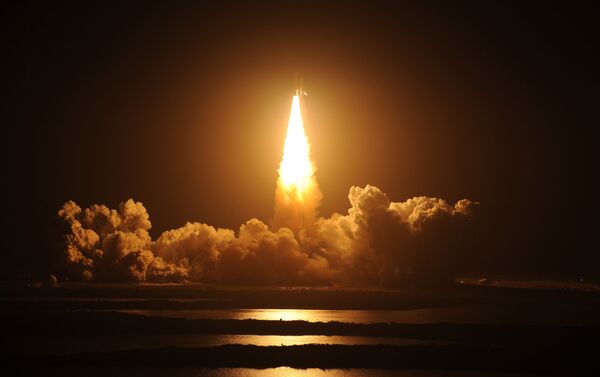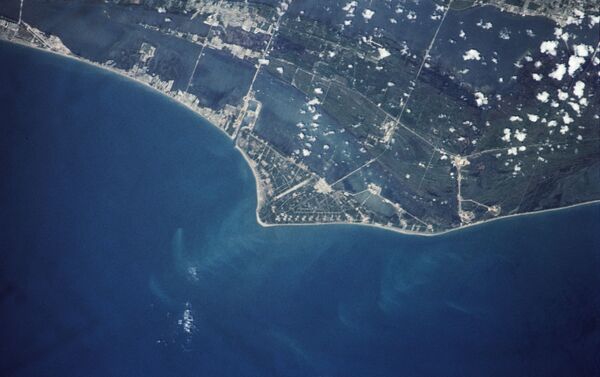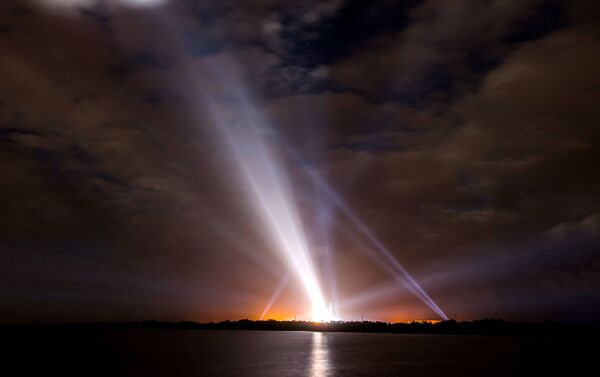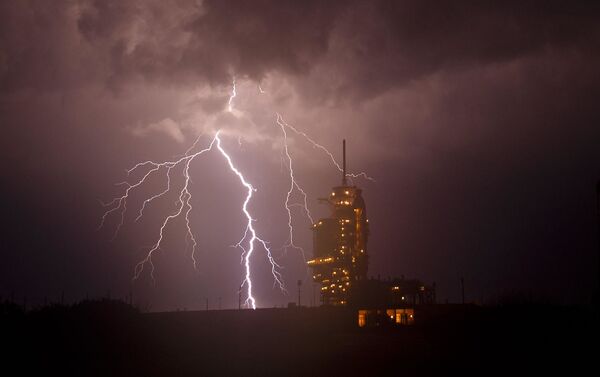地球温暖化やそれに関連する自然現象により多くの重要なNASA施設が二十年ほど後に水没してしまう危険がある。
施設はすべてロケット打ち上げが失敗した場合に備え安全上の理由のため水辺に建設された。当時から専門家が海洋の水位上昇を警告していた。しかし、現在、上昇速度は大幅に増加している。ケネディセンターのある一帯は2050年に20㎝、2080年には38㎝上昇すると見られる。

1/6
© AFP 2023 / Stan Honda
The space shuttle Endeavour lifts off November 14, 2008 from Kennedy Space Center in Florida, on a 15-day flight to the International Space Station (ISS).

This overhead view of the central eastern shore of Florida shows the Cape Canaveral and Kennedy Space Center (28.5N, 80.5W), where all of the NASA manned space missions originate. Sprinkled along the jutting cape are a number of KSC launch pads from the earlier Mercury, Gemini Apollo and Skylab series of spaceflights. Merritt Island, just south of Kennedy Space Center, is where the spacecraft liftoff tracking station is located.

At Space Launch Complex 37 at Cape Canaveral Air Force Station in Florida, floodlights illuminate the sky and a United Launch Alliance Delta IV Heavy rocket as it stands ready to boost NASA's Orion spacecraft on a 4.5-hour mission. During the flight, Orion will orbit Earth twice, covering more than 60,000 miles and reaching an altitude of 3,600 miles on the second orbit.

NASA's Ares I-X rocket is seen on Launch Pad 39B at the Kennedy Space Center in Cape Canaveral, Fla., Monday, Oct. 26, 2009. The flight test of Ares I-X, scheduled for today, Oct. 27, 2009, will provide NASA with an early opportunity to test and prove flight characteristics, hardware, facilities and ground operations associated with the Ares I.

Lightning strikes near space shuttle Endeavour on the pad.

6/6
© 写真 : Public domain
Overall aerial view of Missile Row, Cape Canaveral Air Force Station. The view is looking north, with the Vehicle Assembly Building (VAB) under construction, in the upper left hand corner.
1/6
© AFP 2023 / Stan Honda
The space shuttle Endeavour lifts off November 14, 2008 from Kennedy Space Center in Florida, on a 15-day flight to the International Space Station (ISS).
This overhead view of the central eastern shore of Florida shows the Cape Canaveral and Kennedy Space Center (28.5N, 80.5W), where all of the NASA manned space missions originate. Sprinkled along the jutting cape are a number of KSC launch pads from the earlier Mercury, Gemini Apollo and Skylab series of spaceflights. Merritt Island, just south of Kennedy Space Center, is where the spacecraft liftoff tracking station is located.
At Space Launch Complex 37 at Cape Canaveral Air Force Station in Florida, floodlights illuminate the sky and a United Launch Alliance Delta IV Heavy rocket as it stands ready to boost NASA's Orion spacecraft on a 4.5-hour mission. During the flight, Orion will orbit Earth twice, covering more than 60,000 miles and reaching an altitude of 3,600 miles on the second orbit.
NASA's Ares I-X rocket is seen on Launch Pad 39B at the Kennedy Space Center in Cape Canaveral, Fla., Monday, Oct. 26, 2009. The flight test of Ares I-X, scheduled for today, Oct. 27, 2009, will provide NASA with an early opportunity to test and prove flight characteristics, hardware, facilities and ground operations associated with the Ares I.
Lightning strikes near space shuttle Endeavour on the pad.
6/6
© 写真 : Public domain
Overall aerial view of Missile Row, Cape Canaveral Air Force Station. The view is looking north, with the Vehicle Assembly Building (VAB) under construction, in the upper left hand corner.
ケネディセンターを保護するため、2014年以来、NASAは海岸沿いに砂の堤防を構築し始めた。
ギズモドによれば、この決定は今のところ経済的に正当化されるが、将来的に沿岸地域の宇宙基地を手放すことになる。危険ゾーンで働いてくれる人が見つけにくくなることもその一端という。
「米国の宇宙基地の未来が脅かされている。一番の危険はNASAのよく訴える資金不足ではなく、気候変動。人々が有害ガスを排出し続ける場合、ケネディセンターは宇宙に誰を送ることもできなくなる。水没してしまうのだ」。
なお、宇宙の関連ニュースはこちら。



